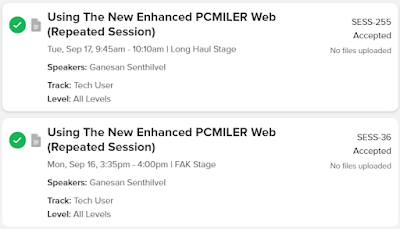Trimble Insight 2024 is an event designed to showcase the latest advancements in Trimble's technology and solutions, which covers transportation industry.
Here are some key aspects you might expect from Trimble Insight 2024:
Keynote Speeches: Presentations by Trimble executives and industry leaders highlighting the latest trends and future directions in technology and solutions.
Product Demonstrations: Live demos of new and existing Trimble products, showcasing their capabilities and applications.
Breakout Sessions: Specialized sessions focusing on different industries and technologies, providing deeper insights and hands-on learning opportunities.
Networking Opportunities: Events designed for attendees to connect with industry peers, experts, and Trimble representatives.
Workshops and Training: Hands-on workshops and training sessions to help attendees maximize the use of Trimble products and solutions.
Exhibitor Showcase: An area where partners and third-party vendors can display their complementary solutions and services.






